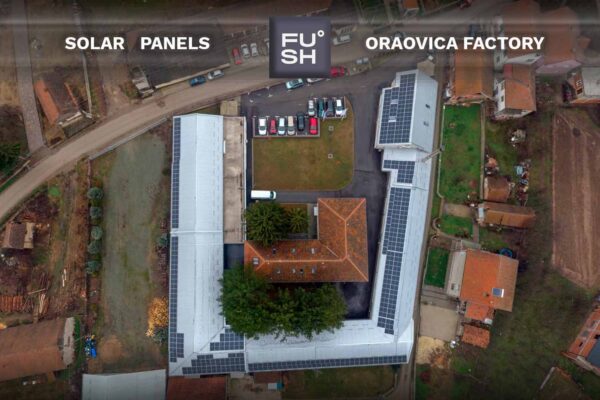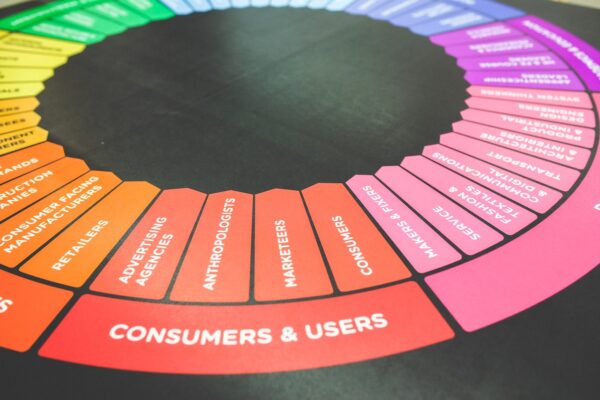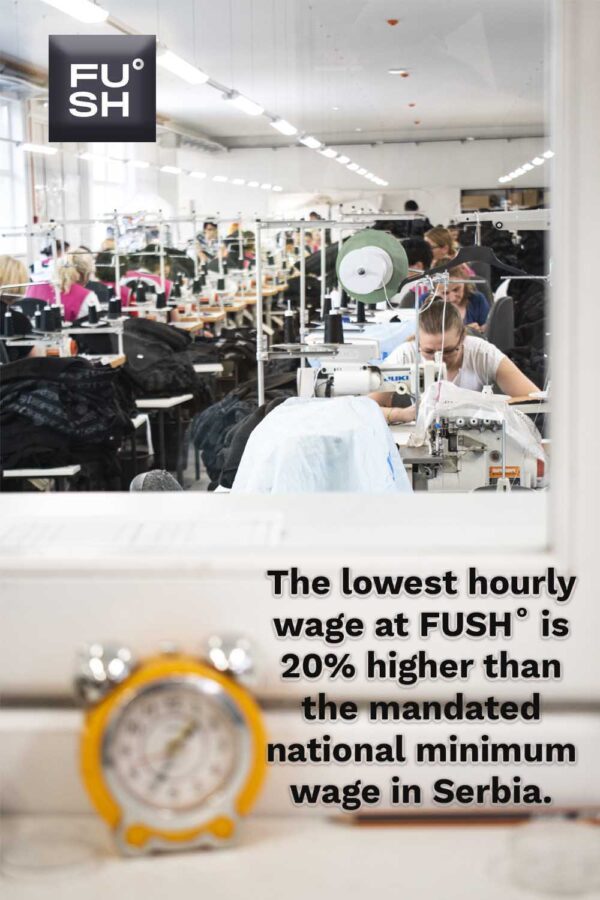Thanks to the work of organizations such as the Clean Clothes Campaign, the fashion industry has been shown for what it is – an environmental and humanitarian cesspool. With it, came the need for the existing clothing brands to market themselves as sustainable. What also came with it is the realization of up-and-coming brands that they themselves could be at the forefront of sustainable fashion.
That’s why this article is made for you – a young clothing brand with a desire to do good in this world. By the last paragraph, you’ll know all the key principles of running a truly sustainable clothing brand and how to apply them.
Eight things you’ll learn about
- Sustainable materials
- Sustainable design
- Ethical and eco-friendly sourcing
- Sustainable shipping and packaging
- Collaboration
- Activism
- Challenges of running a truly sustainable clothing brand
- Success stories of sustainable clothing brands
Why sustainability is imperative for the fashion industry
Being that we live in the era of a widespread illusion that infinite expansion is possible, the fashion industry does its fair share of eternal expansion. To achieve that, it chips away at the environment and the workers’ well-being. With fast-paced production and consumption cycles and fanatical cost-saving practices, it has to do so if it is to make increasing profits for shareholders.

When you run a sustainable clothing brand, you are in the driver’s seat of changing the norms and making a difference.
It is important to understand that sustainability doesn’t begin and end with the environment. The workers’ social and economic well-being is an equally important key principle. Let’s see how you can prioritize both the people and the environment as a truly sustainable clothing brand.
Key principles of running a sustainable clothing brand
To run a truly sustainable clothing brand, you’ll have to have an unwavering commitment to its key principles. They cover everything, from sourcing materials to environmental activism. One thing that sets you apart from greenwashing brands is integrity and integrity is maintained. It’s not a set-and-forget type of deal. In the rest of the article, you’ll learn what steps you need to take in order to stay true to sustainability values. Since you’ll be selling clothing, it’s best we start with materials.
1. Sourcing sustainable materials for your clothing
Every sustainable clothing brand’s journey starts with the fabrics. That’s usually the first thing communicated by the marketing department and the easiest one to stand behind for the customers.
You must carefully choose which fabrics you’ll make your collections from because that will determine both the final price and the way people will understand your devotion to your sustainable path.
Fabrics to go for
Sustainable fabrics you should include in your collections are:
- Organic cotton
- Recycled polyester
Organic cotton is a great fabric because its production is heavily regulated, just like any organic product would be. This means limited use of pesticides, responsible irrigation and fertilization, and safe, healthy and respectable working conditions for the farmers and manufacturers.
As a sustainable clothing brand, you should have a way to prove your clothing is organic. That’s why you should find a GOTS clothing manufacturer. GOTS stands for Global Organic Textile Standard, a voluntary standard that is the strictest one out there for the organic content of the final product. It’s also strict regarding the environmental and social conditions within the GOTS supply chain. Below are some of the conditions for earning this organisation’s label:
- The final product with a minimum of 95% organic content can wear the label “organic”
- The final product with at least 70% organic content can wear the label “made with organic”
- No GMOs and no harmful chemicals will be used at any stage of production
- GOTS-certified companies must adhere to the International Bill of Human Rights (IBHR), International Labour Organisation (ILO), Violence and Harassment Convention (C190), and the national legislation

Recycled polyester
Polyester is an essential fabric for activewear because of its incredible moisture-wicking properties. If your sustainable brand is going to make gym clothes or other types of sportswear like sports jerseys, there’s a way to use polyester sustainably. How? Well, by using recycled polyester fabrics. These fabrics were once plastic bottles floating about in our planet’s various bodies of water.
There’s even a way to prove that your activewear/gym wear/sports jerseys are made from recycled raw materials – the GRS certificate. The fantastic thing about a GRS clothing manufacturer would be able to send you clothing with the GRS label attached so that your customers can know your product is sustainable as they shop.
There are also innovative fabrics that are paving their way towards commercial availability. Spinnova is a very interesting one, as well as various mycelium-based fabric startups.
You want to make sure to keep your finger on the pulse of sustainable fabrics innovation. With some luck, you might find yourself at the forefront of sustainability in fashion if you manage to strike a partnership with a startup eco-fabrics manufacturer.
2. Designing timeless pieces to ensure a longer life cycle
If you are to be a sustainable clothing brand, that sustainability must reflect in your designs. A timeless piece can last until it tears. A trendy piece lasts until the next trend takes over.
The choice is obvious.
To ensure your timeless designs can be worn for years, choose durable materials and use your social media to encourage DIY efforts to mend torn clothes. An additional benefit is that you’ll get user-generated social media content that way.
Furthermore, you should consider implementing zero-waste patterns during the design planning stages so that as little fabric gets wasted as scraps during the cutting process.

Automatic fabric cutter Orox Flexo C-800 with the top-of-the-line robotic arm and easy-to-use CNC controls. This one is located at our Belgrade factory.
Also, whenever possible, release limited-edition upcycled collections from leftover deadstock fabrics that your supplier will definitely have available. Deadstock fabrics are a regular occurrence in the textile industry. Manufacturers usually buy or produce a slightly higher volume of fabrics to ensure production runs uninterruptedly.
That results in a smaller volume of perfectly fine rolls of fabric that you can use to make flash-sale limited-edition collections that you can build hype around.
This is why it’s crucial that you are in constant communication with your supplier(s). Actually, being in touch with your supplier regularly is another crucial step in achieving true sustainability as a clothing brand. Let’s see why.
3. Ethical manufacturing
In our opinion, this is the most important principle. Sustainability must defy the exploitation of both the people and nature. That’s why you must be 100% sure that the workers of the supplier you choose to work with have:
- Safe and healthy working environment
- Living wages
- Legal working hours and overtime that’s paid at a premium
- A functioning workers’ union
As for the factory itself and its operations, it must have a way to prove it’s sustainable by proving:
- It uses chemicals that are harmless to the environment
- It disposes of those chemicals in a way that if they enter the environment, they’re entering it as technical water
- Its CO2-neutrality (usually it means the factory depends on solar power for electricity)
- Recycling and upcycling are done as much as possible

Finally, you should only work with the manufacturers that are physically the nearest to your target market. If you sell in the EU, work only with European clothing manufacturers. This sourcing model is called nearshoring and you can also use it as a marketing tool to explain another sustainable facet of your brand.
4. Implementing sustainable packaging and shipping practices
You can’t have an organic cotton t-shirt made by workers who are happy with their life and who work at a factory that is carbon-neutral to then send that t-shirt to your customer in a plastic bag. It chips away at your sustainability image. Pack that shirt in starch-based packaging or another 100% plastic-free alternative. This is also an area where you should closely follow the development of innovative startups.

As for shipping, consolidate orders to minimize the number of packages and choose shipping providers with strong environmental policies. You should insist on getting orders delivered by EVs or CNG-powered delivery vehicles.
You should also refrain from shipping to areas far from your target market. So if you don’t have a clothing factory in Australia and/or your warehouse there, don’t sell in Australia. It sounds counter-intuitive from a business perspective but how sustainable is a product you have to ship to the other end of the world?
5. Grow sustainably
Let’s make one thing clear – this doesn’t mean not expanding to markets where it makes sense to expand to. But this definitely means defying growth that happens at whatever cost necessary to the world around you.
We believe that as long as you can achieve perfect supervision over your supply chain, expand. Just keep in mind that supervision gets more difficult as your business spreads around the world. It’s always better to stop while you’re ahead. A small company with a great story can both turn a profit and make the world a better place. That’s why marketing is so important.
6. Marketing and promotion of your sustainable clothing brand
Everything you learned so far is what you should communicate through your marketing channels. Don’t miss a single detail that might be proof of your brand’s sustainable conduct.

As you plan your brand, you should screen the influencer network for the ones that would best represent your values on their channels.
Ensure all your marketing channels are actively advocating for sustainable practices. These can be informative posts, videos, or infographics that raise awareness of the things we can do on an individual level. As we pointed out earlier in the article, this is a perfect opportunity for user-generated content.
Because we can only do so much for the environment on an individual level, don’t forget to also raise awareness of the effects of climate change caused by the collective action of complacent governments and insatiable big oil corporations. If you’re not 100% on the side of science on this matter, you can’t run a truly sustainable business of any kind.
Having said that, you should also use all your channels to inform the people how they can put pressure on their legislators so that our grandchildren can have a habitable planet. Maybe even make a collection devoted to certain issues relating to climate and fund an environmental action with the entirety of its sales.
That is why it’s useful to take part in eco-conscious events and sustainability conferences. You get a chance to learn about the ways to tackle the burning issues at hand. Because talking about how you love your planet won’t do, you have to actively defend it by doing.
7. Commit to ecological and social activism

This doesn’t have to be radical activism like Just Stop Oil but you have to walk the talk, that’s for sure. Many brands do it or have done it successfully already:
- United By Blue readily organize cleanups of waterways and oceans in the USA
- Eileen Fisher is partly owned by its workers, which is a precedent in a country that collectively shudders at the idea of worker unions, let alone them owning the means of production
- Patagonia ran a “Vote Our Planet” campaign in the 2016 US elections
You can use these examples to do something similar or come up with your own angle of doing ecological activism as a clothing brand. Maybe being more radical about it can set you apart from the competition in a good way.
But since sustainable clothing brands are in the same boat, seeing other brands as potential collaborators rather than competitors is a much better approach.
8. Collaborating with other sustainable brands and organizations
Collaboration is key to driving positive change in any aspect of life. The fashion industry is no different.
This is why it is crucial that you visit sustainability-focused events and conferences but also research organizations and brands that share your values. It’s easy to spot them – they will advocate for sustainability unapologetically.
As far as collaboration with other sustainable brands goes, you should focus first on the ones selling complementary products. If you don’t intend to sell footwear, your ideal collaborator can be a sustainable footwear brand. Accessories brands would work great too – the ones that sell sunglasses, necklaces and earrings etc.
In the end, you can co-create a collection with another sustainable clothing brand where, for example, you make a t-shirt and the partner makes shorts.
Challenges and obstacles in running a sustainable clothing brand
Running a sustainable clothing brand while the overall standard of living is falling worldwide comes with its own set of challenges you’d have to meet head-on. Those are:
- High manufacturing cost
- Transparency of the supply chain
- Colour limitations of natural dyes
- Greenwashing traps
1. High manufacturing cost
Just as it is impossible to make good quality clothes at an affordable price, it’s impossible to run a sustainable business without a high manufacturing cost.
So if you are serious about running a sustainable clothing brand, you’ll have to get used to a much higher manufacturing cost compared to what regular brands usually (under)pay. Following protocols and laws, paying workers living wages and providing them with safe and healthy workplaces, using ecologically-made materials are all part of manufacturing costs.

This must reflect on the final price but also your profit margin. Because another facet of running a sustainable clothing brand is saying goodbye to part of your profits so that more people can afford your product. True sustainability involves thinking about the bigger picture.
What you can do to reduce your costs is to hyper-optimize all the processes so that you can reduce downtime and the volume of textile waste. This is where close collaboration with your manufacturer(s) can pay its dividends. You can also invest in the automatisation of manufacturing processes or find manufacturers that have already done that.
2. Transparency of the supply chain
Some brands keep their supply chain out of the public light on purpose because the textile industry is festered with human rights violations. Sustainable clothing brands can’t do that.
Not only that you’d have to be fully transparent about who makes your clothes, but you must also be vigilant about:
- All the processes at your manufacturers’ and how they reflect your brand’s values
- The possibility of them using subcontractors you don’t know about
- The wages their workers receive
To make the monitoring process much easier, it is essential that you have easy physical access to the factories of your supplier(s). That is another reason why nearshoring is your go-to sourcing model – a model where your brand’s manufacturing is as close to your target market as possible.
3. Colour limitations of natural dyes
If you decide to be really radical about your brand’s sustainability, you’d most likely opt to use only natural dyes for your products. Natural dyes have a limited colour palette so you’ll have to plan your brand’s visual identity with this in mind.
Another option is to work with OEKO-TEX-certified suppliers that can make and test your collections for harmless substances. The products that pass the test can use the label of this certification body. These manufacturers will use dyes that, even though synthetic, have a significantly lower effect on the environment compared to industry-standard non-certified synthetic dyes.
4. Greenwashing and bluewashing traps

Be very careful when you consider introducing a new fabric to your collections. It might be advertised as eco-friendly while, in reality, it’s as bad as synthetic fabrics. Bamboo and viscose are great examples of this because if not made in strictly regulated conditions, these fabrics aren’t sustainable enough.
Also, be careful about supposedly sustainable research. A clear example is the infamous Higg Index, funded by fashion companies to justify their use of synthetic fibres as well as to serve as a smokescreen for wage theft and other workers’ rights violations.
Vigilance is the key here. Audit your manufacturers on your own as frequently and unannounced as you can. If it means hiring a professional auditor, so be it. Also, triple-check any new technology that appears greener than the green, green grass of home.
Success stories of other sustainable clothing brands
While the challenges are significant, there are still brands out there that are paving their way through the swamp that is the fashion industry. The first name that comes to mind is Patagonia.
Patagonia – a brand that swims against the current
Even though they’re not a perfect example because they still use polyester and the fact that it has recently been found that one of their suppliers from Sri Lanka pays only a quarter of the living wage to their employees.
Still, Patagonia remains a shining example for these reasons:
- The company owner gave all of the company profits to battle climate change
- They run a programme for trading and buying used Patagonia gear as a means to fight overconsumption
- Patagonia took part in a lawsuit against the US government, in an attempt to challenge former-President Trump’s decision to reduce the size of two national monuments in Utah
- As we mentioned before, in 2016, Patagonia’s non-partisan “Vote Our Planet” campaign urged American citizens to vote for representatives that prioritize the planet over profit
They could and should do better but in an environment where Shein exists and chains like H&M and Zara can afford to greenwash, get caught out on it and still turn a massive profit, Patagonia is doing great.
Eileen Fisher – a pioneer of return programs
This famous women’s clothing brand started its Renew Take-Back Program as early as 2009. The programme is still on and it has collected two million garments so far, half of which were resold, donated or remade.
Eileen Fisher truly is the hipster of the fashion industry – the company did the take-back programme before it was cool.
One more thing that’s great about Eileen Fisher – they don’t use synthetic fabrics in their collections.
Conclusion: nothing great comes easy
Running a sustainable clothing brand requires a holistic approach that encompasses sourcing materials, design, manufacturing, packaging, marketing, activism, and collaboration. Just follow the key principles outlined in this article and you will be well on your way to making a small but growing difference.
Remember, building a sustainable brand is a journey, almost like the one Frodo and Sam took as they set themselves to throw the ring into the fires of Mordor. To make it a successful one, you should continuously evaluate and improve your practices. Stay committed to your values, listen to feedback from your customers, and adapt as needed.
Don’t forget to follow what happens in the world around you, have an opinion and act upon it.
Request a quote from us
To get the best possible price and lead time estimate, please include the number of designs and pieces per design, fabric choice, sizes, and printing options.
- FUSH˚ Addresses:
- Velizara Stankovića 67
Belgrade, Serbia(view in Google Maps) - Oraovačka BB
Oraovica, Serbia(view in Google Maps)
- Velizara Stankovića 67
- Phone:+381 11 359 10 48
- Email:info@fush.rs